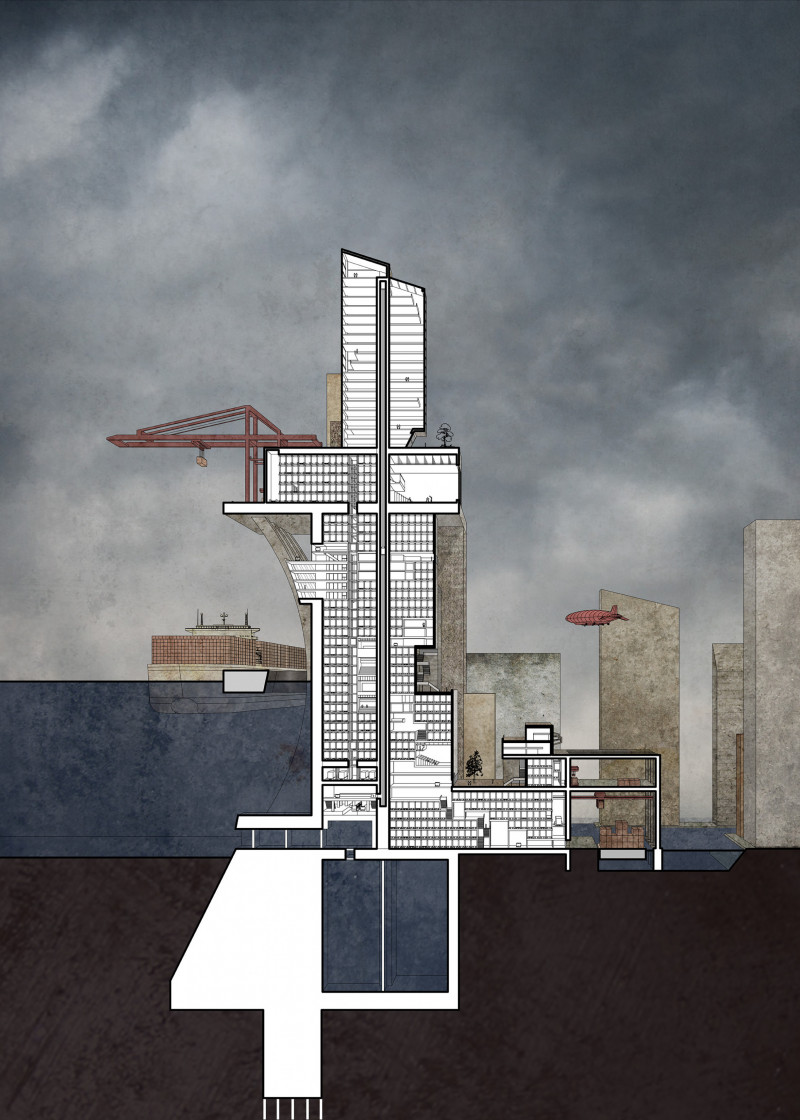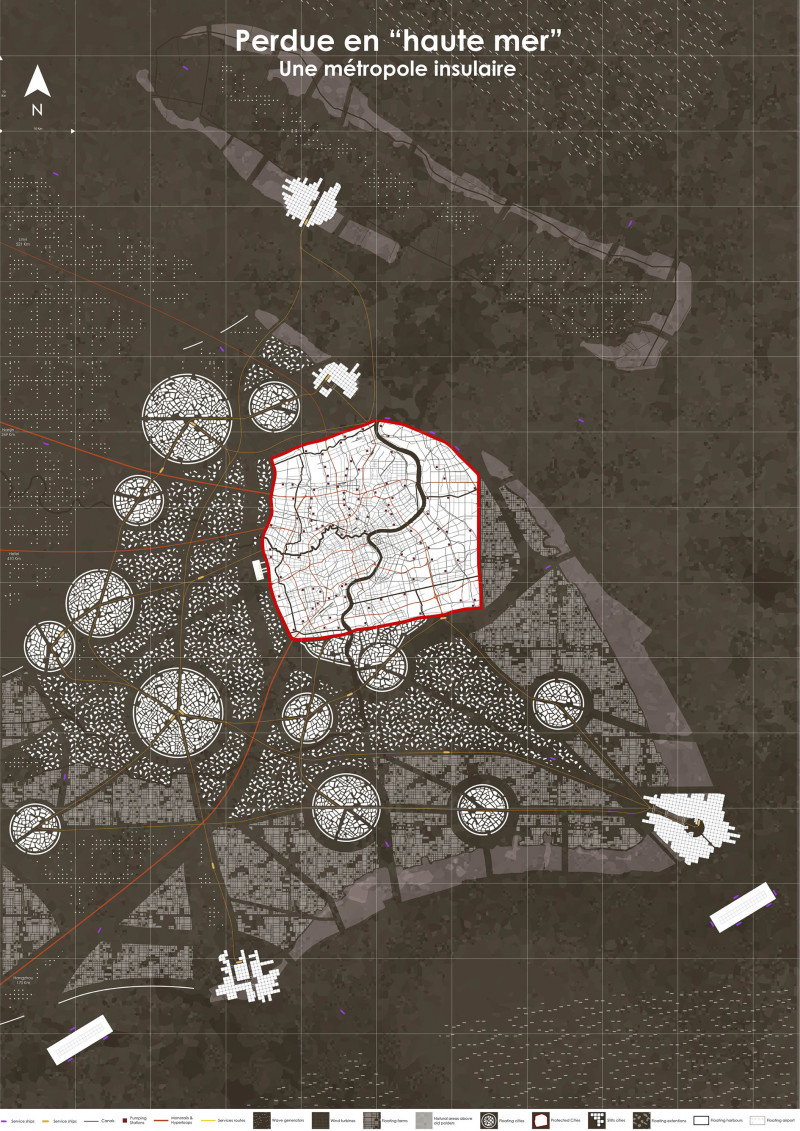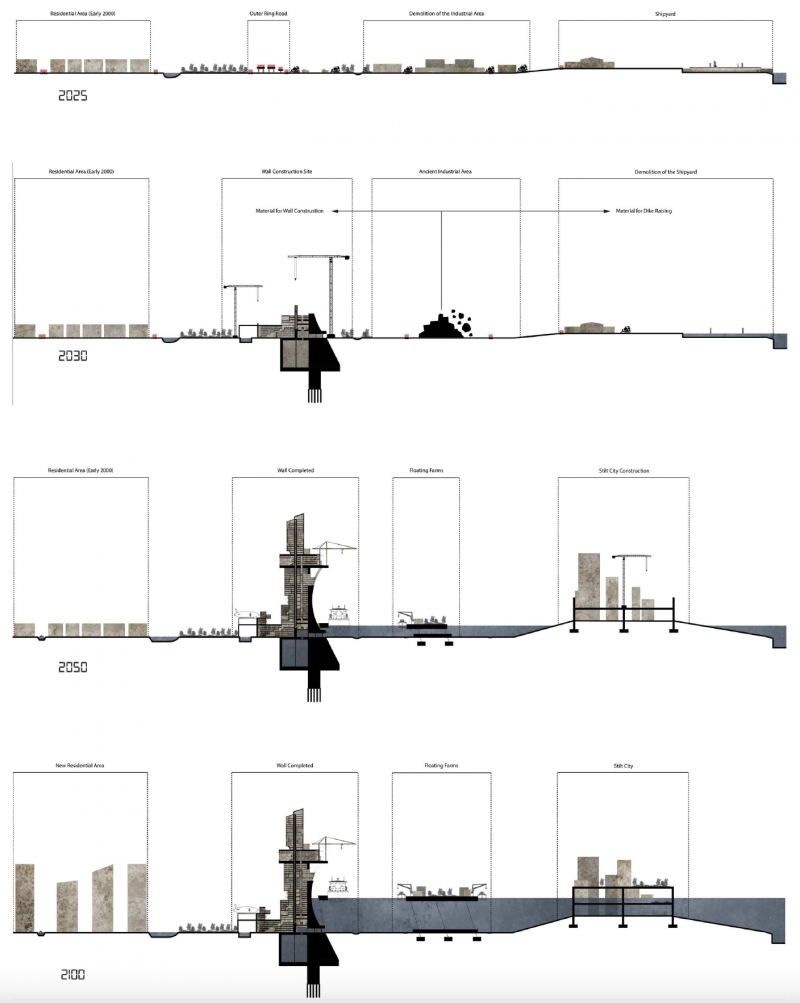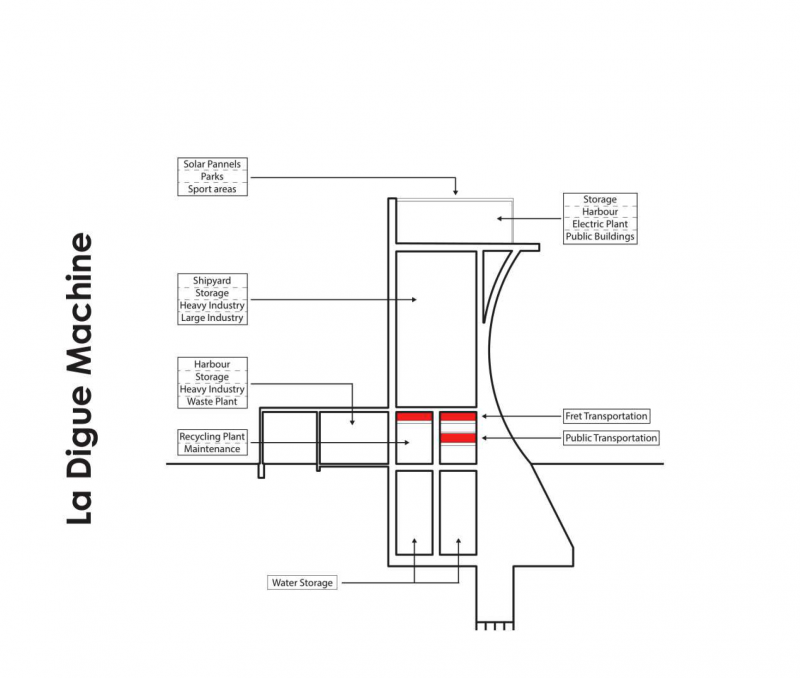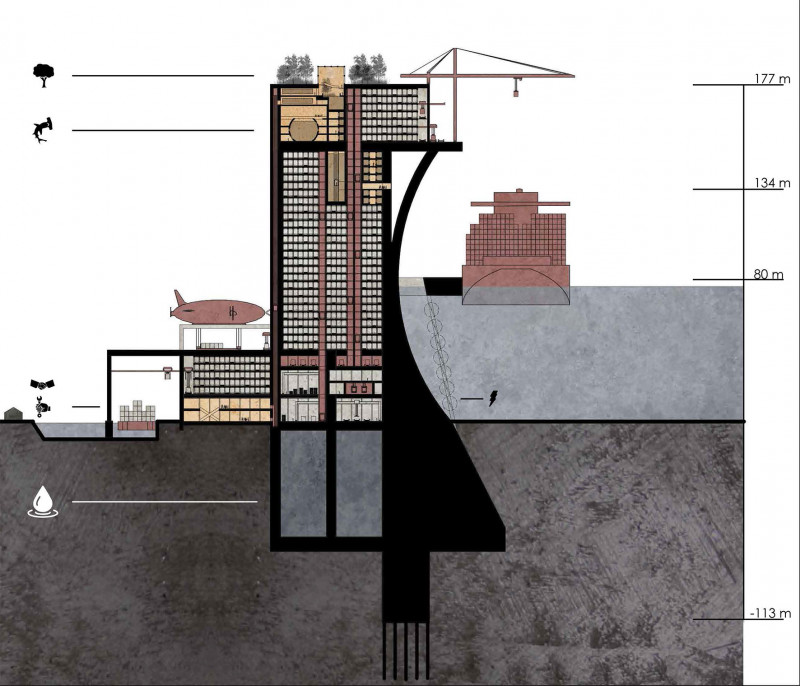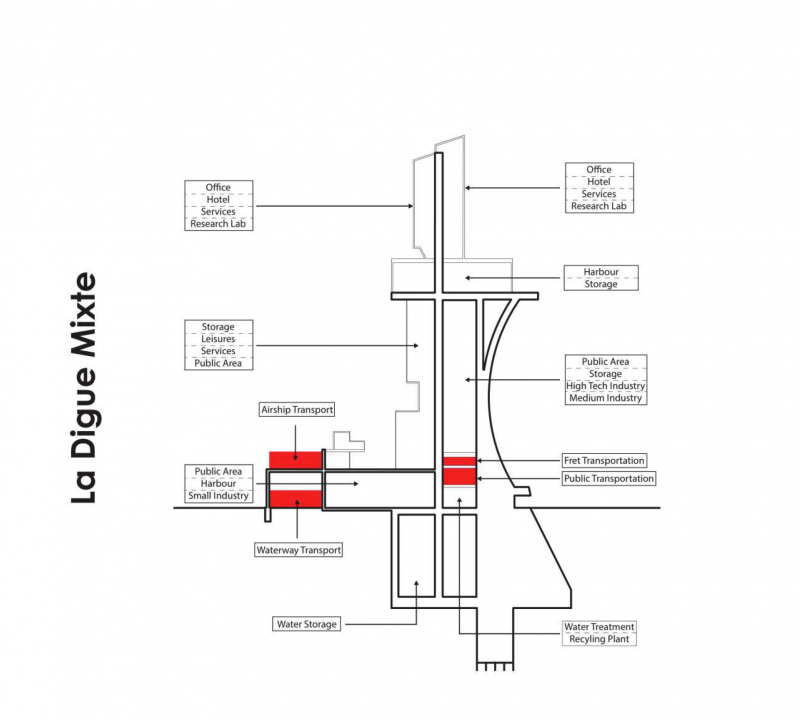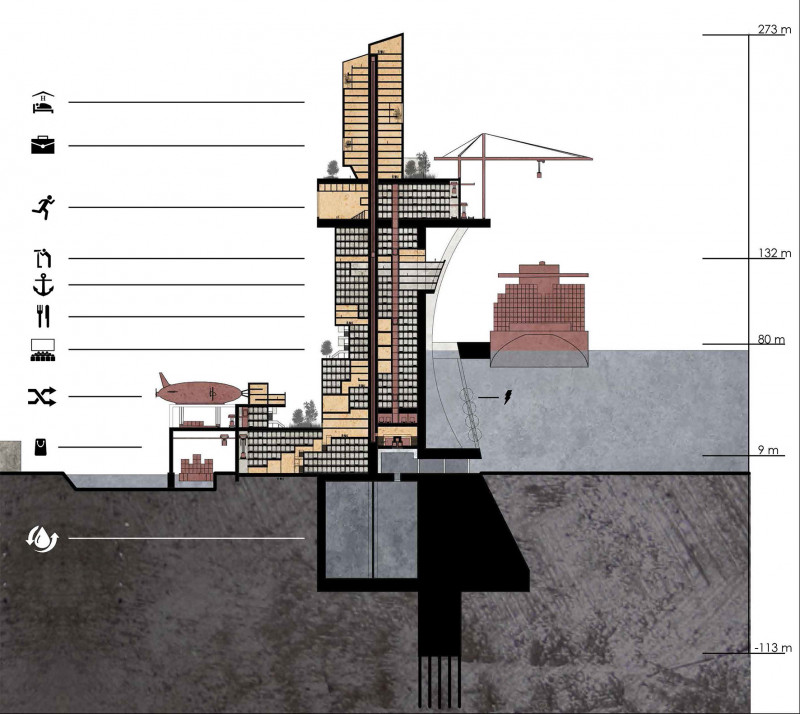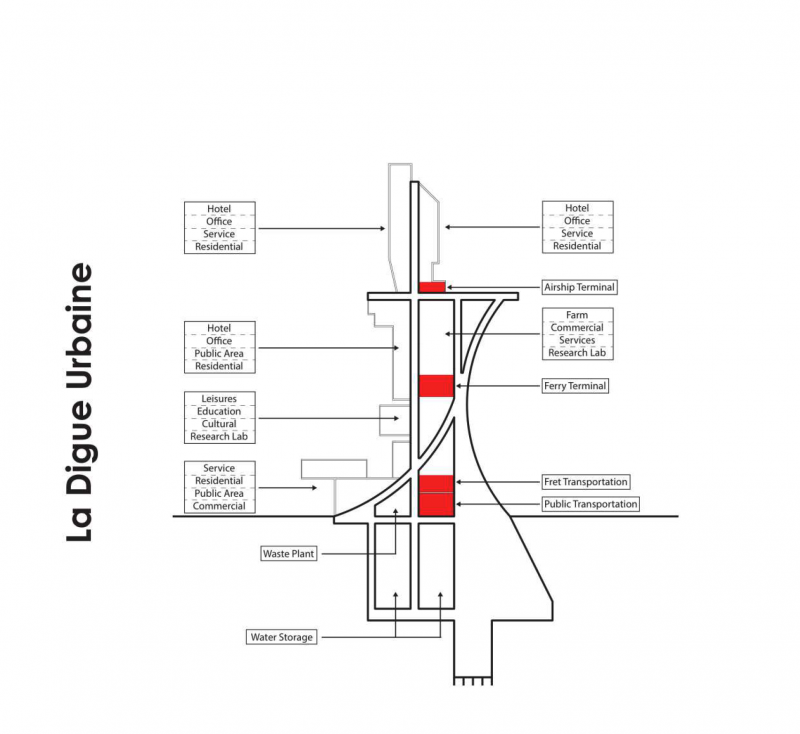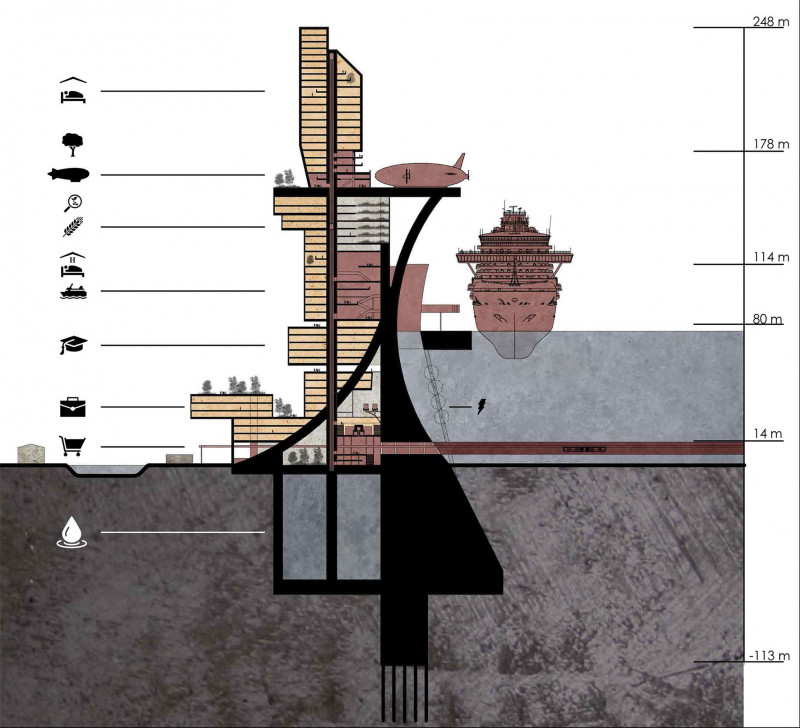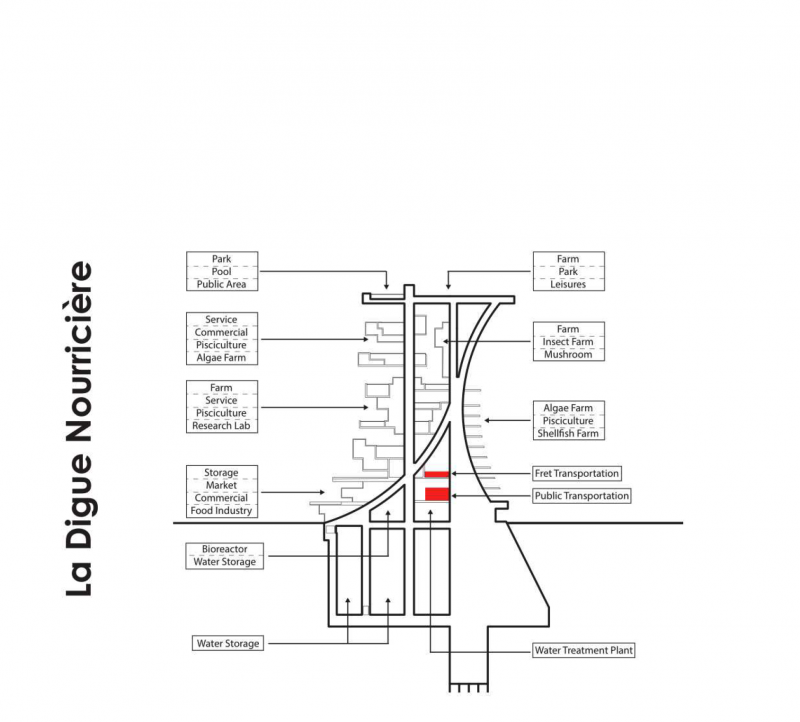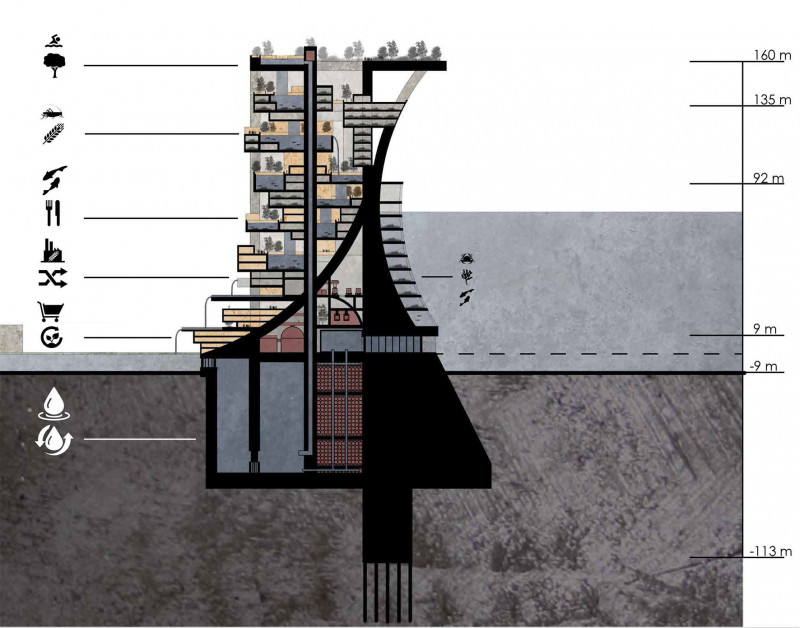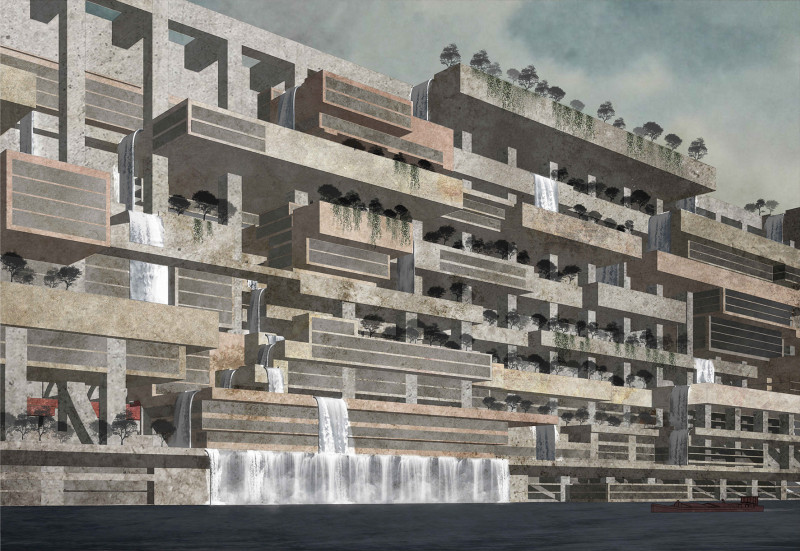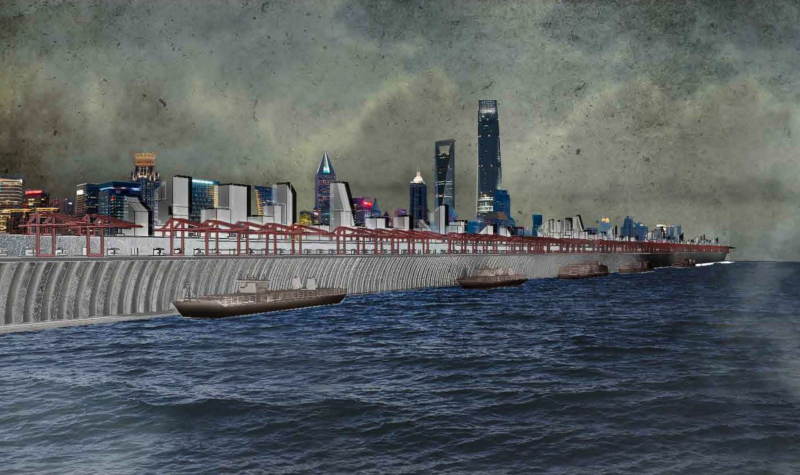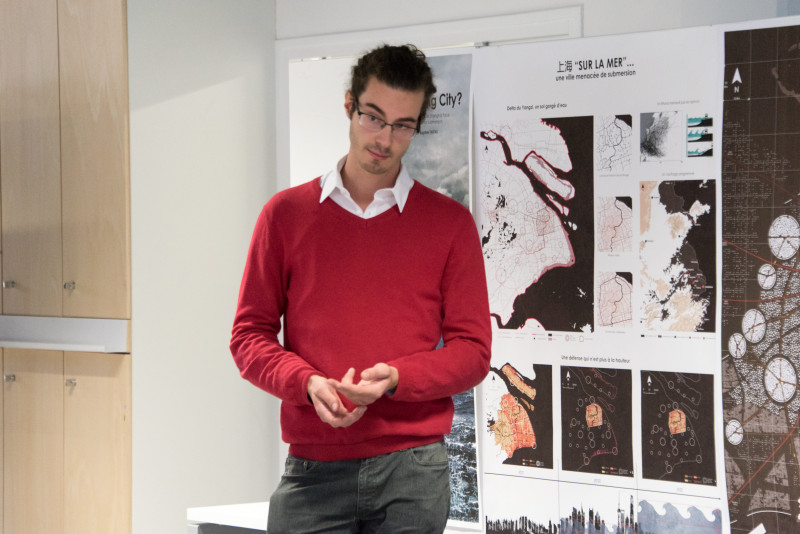The Sinking City ?
How to face the rising waters, knowing that scientists predict, by 2100, the submergence of most cities built on the coasts of South and Southeast Asia?
The project is based on the hypothesis of the construction of a dyke capable of resisting not only the rising waters, but also the large waves caused by bad weather. In Shanghai, this dike is built at the height of one of the peripheral highway rings. It regulates and manages the flow of water that takes place in the old urban streets and boulevards, transformed into canals. It contains within it all the urban logistic functions, from air, rail and river mobility to the great port functions of storage and distribution of food goods.
A multi-scalar approach, from the provincial scale to the city of Shanghai, through the City Dam, is used to develop possible solutions for the general preservation of the Shanghai metropolis.
This Living-Dam, a real city around the city, in charge of defending the (still) existing Shanghai, is thus the main solution proposed by this project. It takes place on the Outer Ring Road, which today delimits the city of Shanghai. The proposal is on the implementation, organization and evolution of this infrastructure and more particularly on its role as an interface between the city and the sea for people and goods allowing to preserve its connection to the rest of the world.




